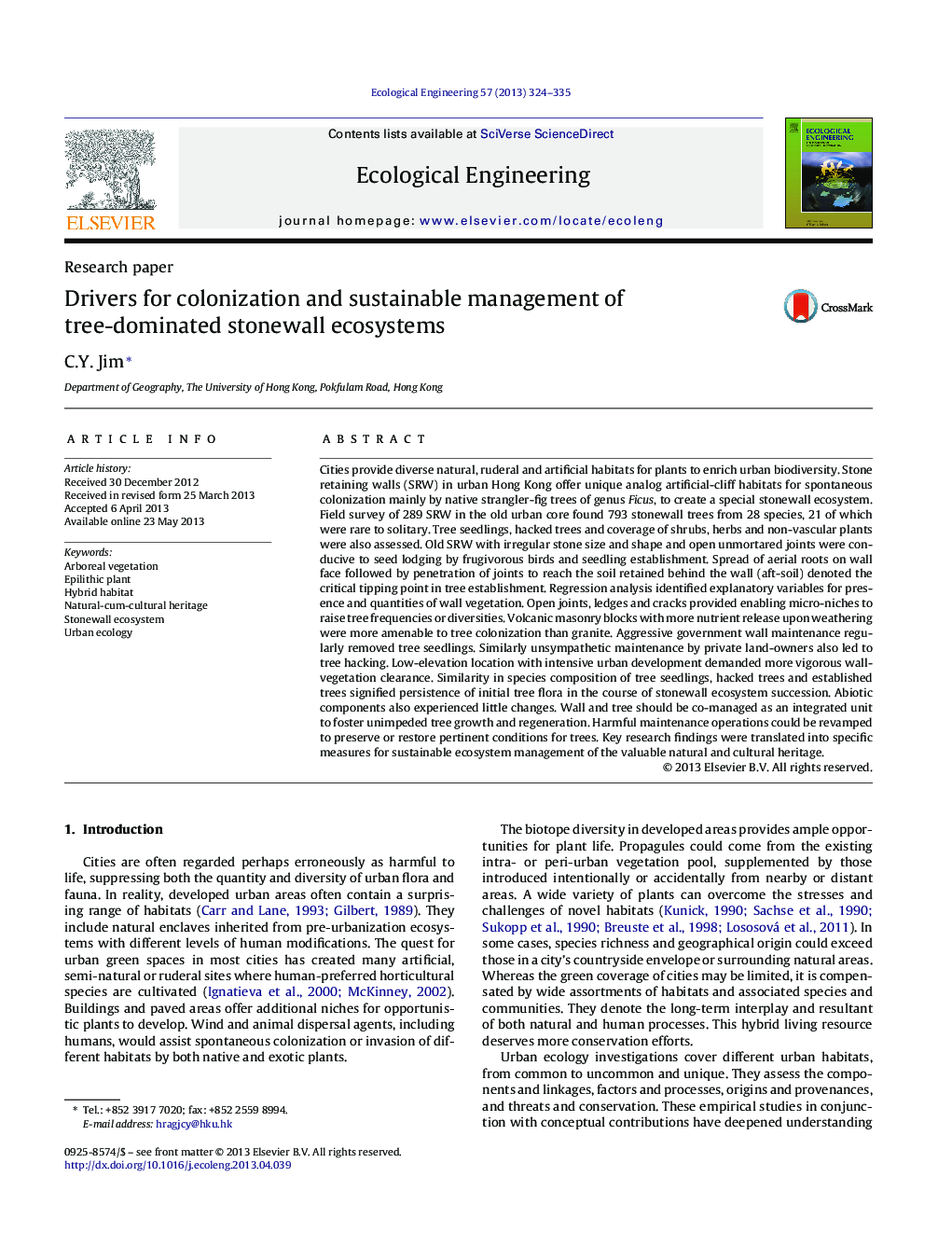| Article ID | Journal | Published Year | Pages | File Type |
|---|---|---|---|---|
| 6302633 | Ecological Engineering | 2013 | 12 Pages |
Abstract
Cities provide diverse natural, ruderal and artificial habitats for plants to enrich urban biodiversity. Stone retaining walls (SRW) in urban Hong Kong offer unique analog artificial-cliff habitats for spontaneous colonization mainly by native strangler-fig trees of genus Ficus, to create a special stonewall ecosystem. Field survey of 289 SRW in the old urban core found 793 stonewall trees from 28 species, 21 of which were rare to solitary. Tree seedlings, hacked trees and coverage of shrubs, herbs and non-vascular plants were also assessed. Old SRW with irregular stone size and shape and open unmortared joints were conducive to seed lodging by frugivorous birds and seedling establishment. Spread of aerial roots on wall face followed by penetration of joints to reach the soil retained behind the wall (aft-soil) denoted the critical tipping point in tree establishment. Regression analysis identified explanatory variables for presence and quantities of wall vegetation. Open joints, ledges and cracks provided enabling micro-niches to raise tree frequencies or diversities. Volcanic masonry blocks with more nutrient release upon weathering were more amenable to tree colonization than granite. Aggressive government wall maintenance regularly removed tree seedlings. Similarly unsympathetic maintenance by private land-owners also led to tree hacking. Low-elevation location with intensive urban development demanded more vigorous wall-vegetation clearance. Similarity in species composition of tree seedlings, hacked trees and established trees signified persistence of initial tree flora in the course of stonewall ecosystem succession. Abiotic components also experienced little changes. Wall and tree should be co-managed as an integrated unit to foster unimpeded tree growth and regeneration. Harmful maintenance operations could be revamped to preserve or restore pertinent conditions for trees. Key research findings were translated into specific measures for sustainable ecosystem management of the valuable natural and cultural heritage.
Keywords
Related Topics
Life Sciences
Agricultural and Biological Sciences
Ecology, Evolution, Behavior and Systematics
Authors
C.Y. Jim,
